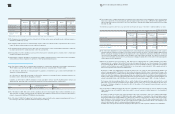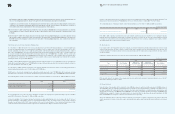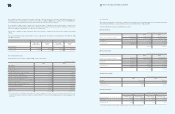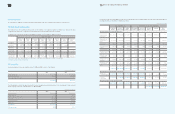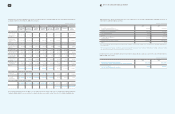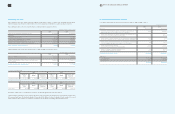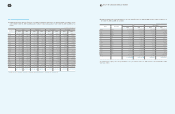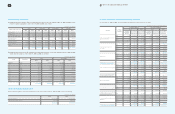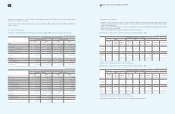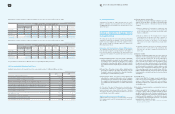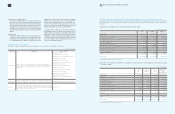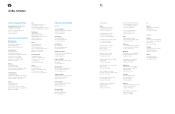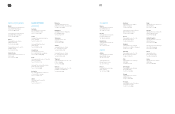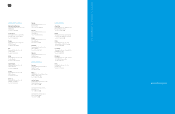Samsung 2009 Annual Report Download - page 48
Download and view the complete annual report
Please find page 48 of the 2009 Samsung annual report below. You can navigate through the pages in the report by either clicking on the pages listed below, or by using the keyword search tool below to find specific information within the annual report.
92 93 NOTES TO THE CONSOLIDATED FINANCIAL STATEMENTS
(5) Derecognition of financial assets
Under Korean GAAP, when the Company transferred a
financial asset to financial institutions and it was determined
that control over the asset has been transferred the Company
derecognized the financial asset. Under Korean IFRS, if the
Company retains substantially all the risks and rewards of
ownership of the asset, the asset is not derecognized but
instead the related cash proceeds are recognized as financial
liabilities.
(6) Deferred Tax
Under Korean GAAP, deferred tax assets and liabilities were
classified as either current or non-current based on the
classification of their underlying assets and liabilities. If there are
no corresponding assets or liabilities, deferred tax assets and
liabilities were classified based on the periods the temporary
differences were expected to reverse.
Under Korean IFRS,
deferred tax assets and liabilities are all classified as non-
current on the statement of financial position. As a result,
there is an increase in the amount of deferred tax assets and
liabilities offset against each other under Korean IFRS.
In addition, there is a difference between Korean IFRS and
Korean GAAP in terms of recognition of deferred tax assets or
liabilities relating to investments in subsidiaries. Under Korean
GAAP there is specific criteria as to when deferred tax assets
and liabilities relating to investments in subsidiaries should be
recognized, whereas under Korean IFRS, the related deferred
tax assets or liabilities are recognized according to sources of
reversal of the temporary differences.
Changes in scope of consolidation
At the date of transition, changes in the scope of consolidation as a result of adoption of Korean IFRS are as follows:
(In millions of Korean won)
Changes Description Name of Entity
Newly added
Under the former ‘Act on External Audit of Stock companies’ in the Republic of
Korea, companies those whose total assets are less than 10 billion Korean won
were not subject to consideration, but they are subject to consolidation under
Korean IFRS.
World Cyber Games,
Samsung Electronics Football Club
SEMES America, Samsung Electronics Ukraine,
Samsung Electronics Romania,
Samsung Electronics Kazakhstan,
Samsung Electronics Czech and Slovak s.r.o.
Samsung Electronics Levant,
Samsung Electronics European Holding,
Batino Realty Corporation,
Samsung Telecommunications Malaysia,
Samsung Electronics Shenzhen,
Samsung Electronics China R&D Center,
Samsung Electronics Limited,
Samsung Electronics Poland Manufacturing,
Samsung Telecoms (UK)
Newly added Under Korean GAAP, a union is not regarded as a legal entity and excluded from
scope of consolidation. However, it is subject to consolidation under Korean IFRS Samsung Venture Capital Union #6, #7 and #14
Excluded
Under Korean GAAP, entities where the Company owns more than 30% of shares
and is the largest shareholder with the largest voting rights were included in scope
of consolidation. Under Korean IFRS, such entities are not subject to consolidation
unless control over the entity is established
Samsung Card
The effects of the adoption of Korean IFRS on the statement of financial position and the results of operation
Reconciliation of the effect of the transition to Korean IFRS from Korean GAAP on the balance sheet and net income of the Company
has been prepared on a consolidation basis and subject to change following the subsequent GAAP difference analysis or amendment of
standards.
(1) Adjustments to the balance sheet as of the date of transition, January 1, 2009.
(*) The adjustment includes the effect of deferred tax
(2) The effect of the adoption of Korean IFRS on the balance sheet and net income of the Company as of and for the year ended
December 31, 2009.
(*) The adjustment includes the effect of deferred tax
(In millions of Korean won)
Asset Liabilities Equity
Korean GAAP
₩
105,300,650
₩
42,376,696
₩
62,923,954
Adjustments:
Change in scope of consolidation (12,972,168) (10,649,400) (2,322,768)
Fair valuation of land(*) 3,816,293 927,141 2,889,152
Derecognition of financial asset 1,807,675 1,807,675 -
Capitalization of R&D costs 200,478 - 200,478
Pension and compensated absence - 186,978 (186,978)
Deferred assets on investments in equity and reclassification to non-current (1,434,287) (1,332,886) (101,401)
Financial statement presentation (95,064) - (95,064)
Effect of the adoption of Korean IFRS for jointly controlled entities and associates 155,163 - 155,163
Tax-effect on adjustments (141) 2,010 (2,151)
Total (8,522,051) (9,058,482) 536,431
Korean IFRS
₩
96,778,599
₩
33,318,214
₩
63,460,385
(In millions of Korean won)
Assets Liabilities Equity
Net income
for the
current period
Korean GAAP
₩
118,281,488
₩
45,227,196
₩
73,054,292
₩
10,229,921
Adjustments:
Change in scope of consolidation (10,120,256) (7,372,830) (2,747,426) (383,703)
Fair valuation of land(*) 3,804,404 924,525 2,879,879 (9,273)
Derecognition of financial asset 754,969 754,969 - -
Capitalization of R&D costs 214,451 - 214,451 13,973
Pension and compensated absence - 153,357 (153,357) 33,621
Deferred assets on investments in equity and reclassification to non-current (874,056) (564,016) (310,040) (170,028)
Financial statement presentation (143,058) - (143,058) (47,994)
Effect of the adoption of Korean IFRS for Jointly controlled entities and
associates 266,742 - 266,742 108,163
Tax-effect on adjustments (4,895) 11,386 (16,281) (14,130)
Total (6,101,699) (6,092,609) (9,090) (469,371)
Korean IFRS
₩
112,179,789
₩
39,134,587
₩
73,045,202
₩
9,760,550


